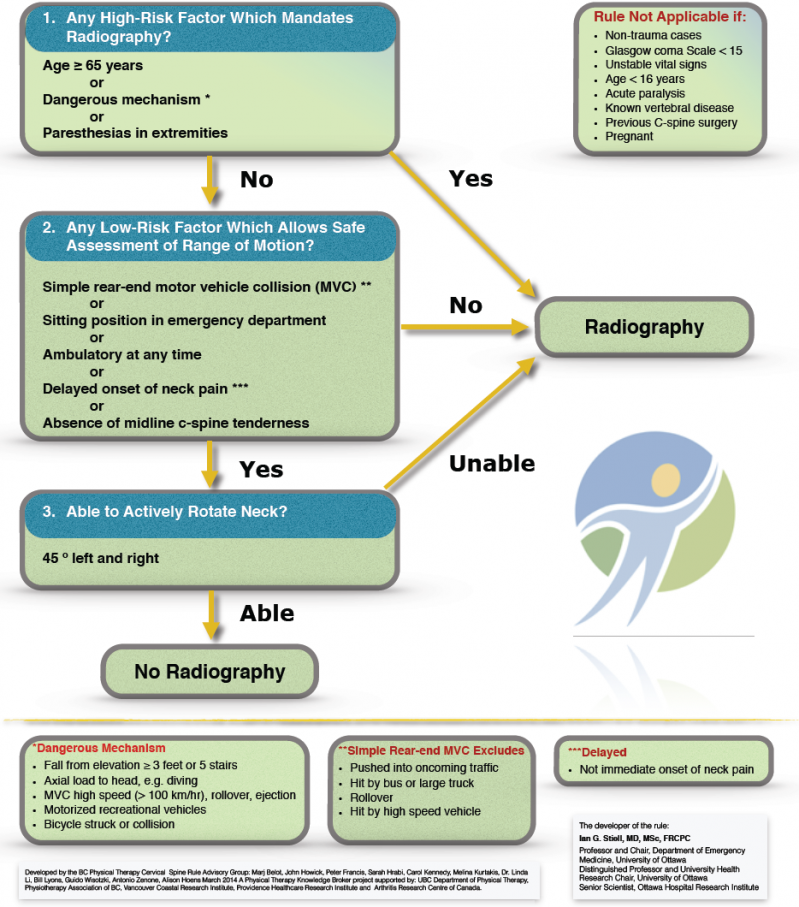Canadian Cervical Spine Rule
In 2017 there were few studies assessing the diagnostic test accuracy of the NEXUS Criteria for C-Spine Imaging and CCR in children. At this moment, there was not enough evidence to determine the accuracy of the Canadian C-spine Rule to detect CSI in pediatric trauma patients following blunt trauma. The confidence interval of the sensitivity of the NEXUS criteria between the individual studies showed a wide range, with a lower limit varying from 0.18 to 0.91 with a total of four false negative test results, meaning that if physicians use the NEXUS criteria in children, there is a chance of missing CSI. Since missing CSI could have severe consequences with the risk of significant morbidity, we consider that the NEXUS criteria are at best a guide to clinical assessment, with current evidence not supporting strict or protocolized adoption of the tool into pediatric trauma care. Moreover, we have to keep in mind that the sensitivity differs among several studies, and individual confidence intervals of these studies show a wide range. Our main conclusion is therefore that additional well-designed studies with large sample sizes are required to better evaluate the accuracy of the NEXUS criteria or the Canadian C-spine Rule, or both, in order to determine whether they are appropriate triage tools for the clearance of the cervical spine in children following blunt trauma 1).
